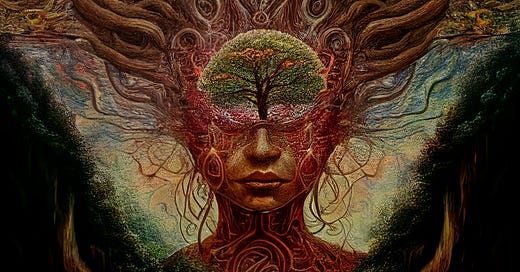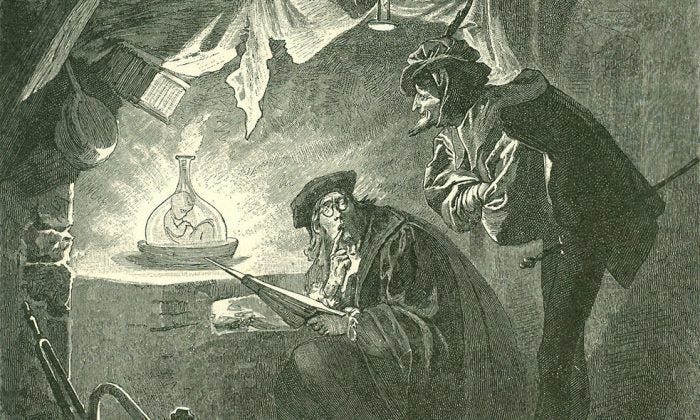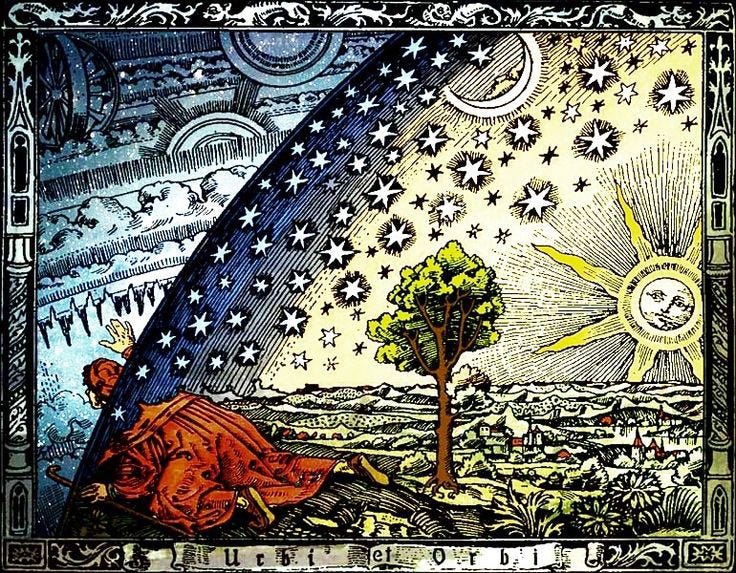The Collective Consciousness: Rise of the Internet
One day, humanity may evolve beyond not only individual societies, but will merge us into a singular, cosmic mind. Perhaps the Internet is the gateway to this.
Our species evolved from close-knitted tribes into cities sprawling across the face of the Earth, all connected and communicating through a singular, unified medium: the Internet. While we may find these achievements remarkable, they really aren’t so different from the life-long works of the common ant. Ants don’t worry about the preservation of themselves as individuals. Instead, each ant is an auxiliary. They are an appendage of one gigantic entity, harvesting resources to expand the nest, where the next generation will be hatched. Each ant has its own tiny brain, but due to its size and simplicity, it’s not entirely clear how intelligent you could say a single ant is. But when ants harmonize their actions, working towards a shared purpose, they are capable of building structures that put some of humanity’s finest architects to shame. We take it for granted that humanity is intelligent, but perhaps our intelligence is matched or even outdone by superorganisms, such as ants. Or perhaps, we are part of developing superorganism too.
Since the written word, we have been doing all we can to increase our mental capacities. Books and scripts provided us with extra memory and the printing press allowed us to spread these ideas across vast regions of the world. People were able to share literature, philosophy and science. Meanwhile, institutions were built up around these, forming libraries, classrooms and universities. Much of what we learnt then came to fruition in the Industrial Revolution, when we built the first set of sophisticated machines, which made our survival easier and our lives more convenient. Then technology became less about automating simple, laborious tasks. It became about solving intellectual problems. The abacus evolved into a mechanical computer, which in turn evolved into a digital one. Now we carry it in our pockets every day of our lives. These devices have been solving problems previously only the smartest of us could, and in a far shorter time span. Alan Turing was one of the first to explore how calculations, given enough time and complexity, could replicate the very functions we consider exclusive to us: language, thinking, and philosophizing. This is examined in some detail in Turing’s paper on the Imitation Game i.e the Turing Test.
After Turing, there was a stir in the air, a movement towards making computers that could outperform the very people building them. Research started into making software that could mimic the human brain. Two neuroscience experts, Pitts and McCulloch, started the first research into making software that could mimic the brain, in particular, a special function of it: learning.
Our brains consists of neurons, cells that have a similar diameter to a strand of human hair, and these cells form the entire nervous system. Each of us has around a billion neurons; each one plays an important role in interpreting the mysterious vistas of the world around us, reshaping it so that we can navigate, explore and enjoy our lives. Our thoughts and feelings are determined by connections between these neurons, called synaptic connections. When two neurons are connected, they are said to fire together. The more intense and experienced this connection is, the greater the effect of firing. This is what it means to learn something new, and so, the two researchers used this model of the mind to start research into replicating it with code. Many years passed, with numerous computer scientists and neuroscientists developing further theories and models, before the first algorithm was composed that could actually mimic the human brain: the neural network. Specifically, a neural network designed to perform deep learning. The human brain, at least the parts that allow for sophisticated thinking, consists of cortical columns that layer on top of each other and interact in particular ways. The neurons in these layers are connected in a hierarchical manner, consisting of simple layers, that can take in very particular pieces of input, for example, recognizing a single edge, or noticing a particular colour, for example, brown, that then feeds up to layers with higher levels of complexity and abstraction, which coalesces all of the input from the simpler layers into a complete picture. Following our previous examples, this final image, composed of edges and the colour brown, could be a table. Deep learning models make use of algorithms that replicate these processes. The field is gaining increasing prominence and influence as more researchers enrich it and more companies adopt it.
These deep learning models are used in all manner of artificial intelligence today, everywhere from language translation, computer vision, self-driving cars and recommendation algorithms, such as the one that Netflix uses on us every day of our lives. Technology has become all about encoding cognitive abilities, and minimizing the need for a person’s. As it becomes more sophisticated, only the higher order-cognitive functions, the abstract, big-picture, multi-dimensional problem-solving faculities, will be exclusive to humans. For a while, anyway.
But it might not be enough that simply because a program can more or less reproduce the processes that go on in our brains, that we can call this program conscious. Our own minds have a rich and ancient history, from the time when we had nothing but primitive reptilian brains, till the more recent Millennium, when layers of intricate-tissue emerged, granting us higher thinking, with the emergence of the neocortex, a key organ in cognition, and making up the hierarchical connections discussed earlier, as well as the frontal lobe, relevant to creativity and more artistic levels of thought.
These brains were shaped by the environment so that we could live and thrive as social beings, and through this sculpting, our brains have been inscribed with what Carl Jung, founder of analytical psychology, describes as ‘patterns of instincts’. Our minds, he argues, consist of elements of unconscious feelings, memories and ideas, and these elusive entities can actualize in specific ways. The ways in which these primordial, universal ideas, which are common to all of humanity, manifest, is through repeated patterns, symbols and motifs. An example of an archetype is the figure of the mother, often a symbol of life, birth and care, but also, being a figure that may hold back or over-protect her young, even going so far as to try to devour them, so that they have to rebel in order to grow independent of her. This archetype has presented itself as Kali, the Hindu Goddess not only of Death, but also a symbol of motherly love, and Demeter, a Greek figure who was Goddess of the Harvest, a symbol of motherhood, but also a symbol of the cycle of life, death, and rebirth. These archetypical figures, like the mother, the anima, the animus, and the shadow, appear in just about every culture and mythology there is, and often manifest in our own every day lives. The essence of these archetypes has existed since the dawn of consciousness. Due to the nature of our ancient ancestry, stories are a necessary part of the psychology of the human race.
Jung viewed mythology less as a series of allegories, but more as a way in which the psychic elements of our minds could be cast out and realized in a tangible form. For example, we have symbols that refer to the change of seasons, the rising and setting of the sun, and the lunar phases of the moon. The symbol of winter can be said to represent death, but Jung argues symbols do not have this direct representation of a physical event. Rather, we have harnessed the imagery to represent primordial and abstract ideas, feelings, fears and desires. They are the shapes through which our mental dramas and conflicts and experiences are expressed through.
These unconscious images swimming around in the lowest stratum of our minds are entirely abstract and unprocessed by the conscious mind, and archetypes are the common forms which these images take, when they are eventually perceived by the conscious mind. These patterns, the archetypes, are the lens through which we perceive the more incomprehensible and visceral ideas, when we experience and understand life itself. These forms, which manifest in every culture, time and medium imaginable, form a tapestry which we all share: it is humanity’s collective unconscious.
In order for a machine to be truly said to have a brain like ours, it would need to have a brain just like ours, with these elusive and tribal formations, which express unconscious elements through universal mythology and symbolism. That said, perhaps this is just one way in which consciousness can present itself. It is difficult to speculate how else a conscious being might arise besides through biological evolution. What seems more immediate and clear is the trajectory of our own consciousness as a society. As the Internet continues to grow and dominate every aspect of our lives, we become more alike, because our thoughts and ideas are drawn forth from the same pool. With the rise of social media, big data and very shortly, brain-machine interface technology, it may be that our minds and their inventory become public access. Indeed, with the current pandemic at hand, we are becoming more bound and connected through technology and the Internet than ever before, and it may be that we continue living like this even after the pandemic has passed.
If we do indeed have a collective unconscious, it is possible that due to technology, this unconscious is being integrated into a more immediate state of being. Our minds have evolved from the primitive stages of a simple yet collective unconscious into this precursor form of universal consciousness. The subterranean worlds of our innermost wants, desires, secrets, and insecurities, are all emerging to the forefront, as the divide between individual and group wanes. Perhaps humanity will emerge beyond not only individual societies but will also grow and merge with technology, evolving us into one, into a singular, cosmic mind, that will begin to think and contemplate as an individual. Perhaps this cosmic mind will encounter other strange and distinctive forms of consciousness, as it travels and comprehends the Universe, each mind with its own unique properties, ideas and aspirations.
One day, the Universe will go back into its original state, as it was almost 14 billion years ago, back into a singularity. This reversion is called the heat death, in approximately a googol years (10 with a hundred zeros after it). It will reduce all matter and non-matter into the same formless, thermodynamic energy. When that happens, perhaps the universe will once again have a singular, pantheistic mind, and will then split up once again, into countless fantastical, unthinkable worlds, where the cyclic nature of existence will not so much repeat, but change. For time and space are yielded by the forces of nature, preceded by it, and so, cannot ever be said to limit it.





